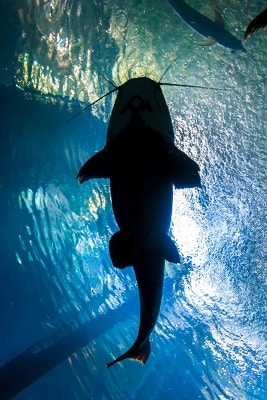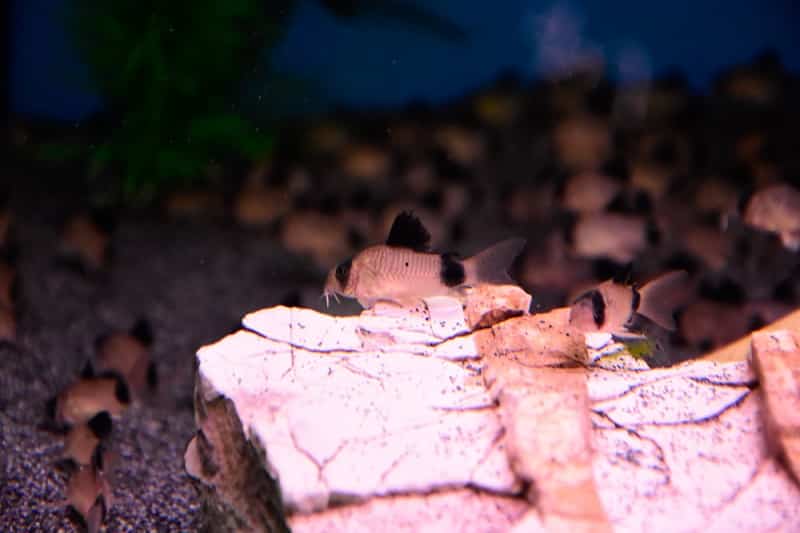
Cory Catfish Types
Cory catfish types remain one of the most popular types of catfish for aquariums. These peaceful catfish are known for being bottom dwellers, adding visual appeal to a fish tank and for their beautiful appearance. There are quite a few cory catfish types available for aquarists to choose from when they are deciding on new fish for their tank. It is important to remember that these fish should be kept in schools, so more than one is necessary for them to be both happy and healthy.
Bandit Cory
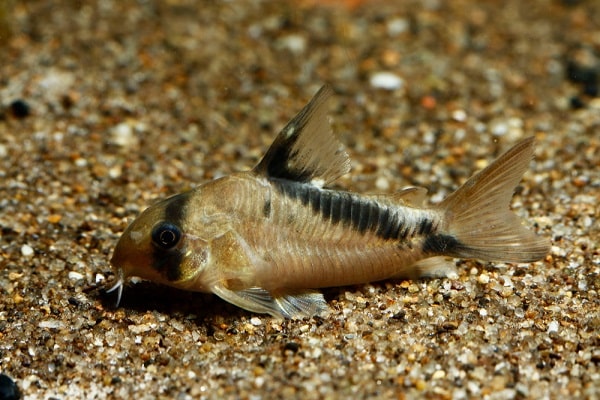
The Bandit cory gets its name from the adorable black that goes over its eyes, just like a little mask on a bandit. These peaceful fish will only grow to approximately two inches when they are adults, making them perfect for smaller aquariums. Beginners that would like a beautiful school of non-aggressive tropical fish without having to spring for a massive aquarium will love the bandit cory.
Bronze Cory
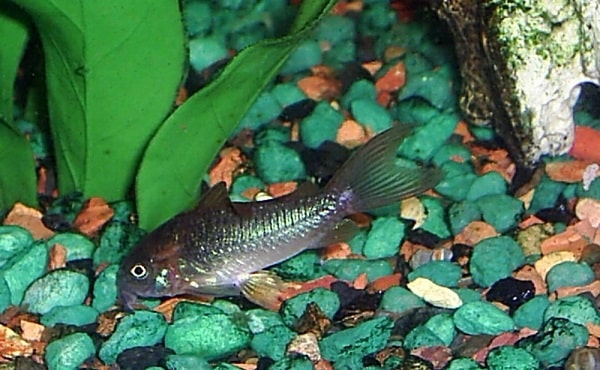
The Bronze cory is also known as the green corydoras because of its beautiful pattern of bronze and green. Morphs are also available on the market. Albino and black bronze Corydoras remain the most popular choice among hobbyists that prefer fish with a unique appearance. These peaceful catfish are the perfect way to add beautiful color to any small aquarium. With an adult size of approximately 2.5 inches, owners will never have to worry about upgrading to a massive aquarium to keep their fish happy. Instead, they will need to be kept in a school with a minimum size of 10 gallons.
Panda Corydoras
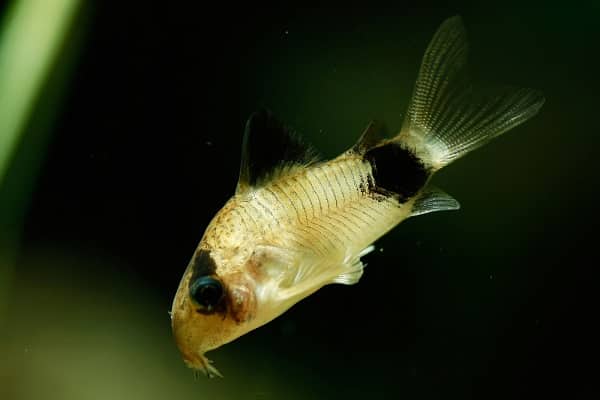
The Panda corydoras, also known as the Panda catfish or Panda cory, is also named after its unique pattern. It has the black and white markings of a gorgeous Panda, complete with black spots over its eyes. This beautiful fish is one of the smaller catfish and will only grow to approximately two inches in captivity. Unlike other fish, this one will make friends with any other bottom dwellers to form a school. It can easily be paired with other varieties of cory catfish, and it will get along with them just fine. The Panda Corydoras will live a long life of approximately ten years when it is kept in a happy, healthy environment.
Blue Leopard Cory
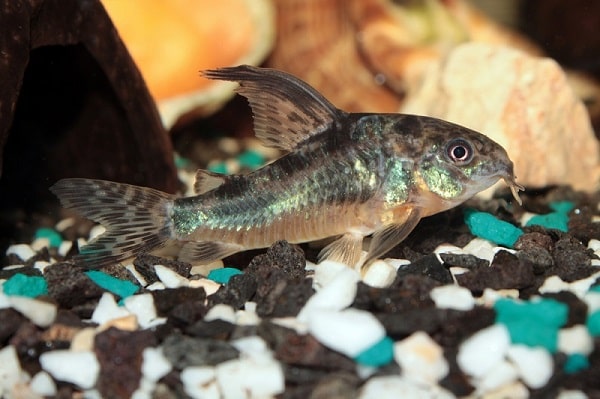
The blue leopard cory, also commonly referred to as the peppered cory, is a darker colored cory that carries many of the same characteristics of the cory catfish family. It will remain small, with the largest females typically growing to only three inches. Also, it will need to be kept in a school of peaceful fish to remain happy. If happy and healthy, this adorable bottom-dwelling catfish will live a nice lifespan of approximately five years.
Julii Cory Catfish
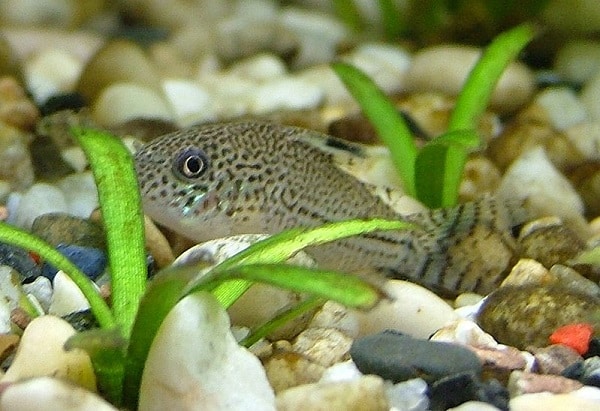
The Julii corydoras is also commonly known as the leopard cory due to its adorable spots. These peaceful fish prefer to live in larger groups, but they do tend to school well with other types of Corydoras as well, so hobbyists are not stuck buying ten of the same fish. The leopard cory is known among hobbyists for being one of the more rare fish to own, which has made it one of the most sought after cory catfish. They only grow to approximately two inches when adults, too, so aquarists can enjoy not having to purchase a new tank as they grow older.
Corydoras Trilineatus
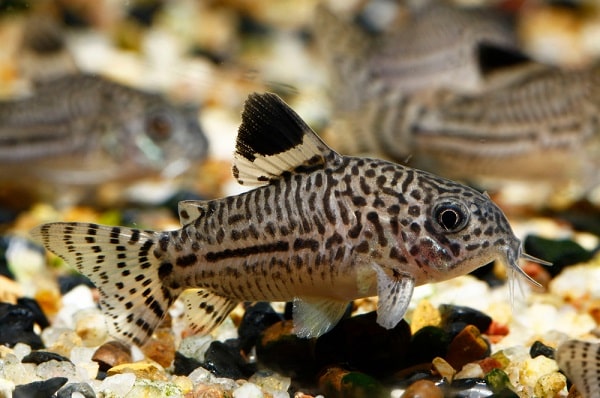
These catfish are often known as false Julii Cory catfish. This is because they have the same color patterns, and the same spots. They even share the same temperament and size, with false Julii catfish only growing to approximately two inches long as well. The primary difference between these two fish is that the Corydora Trilineatus is more readily available than the Julii catfish. Often, a person can find tanks full of these in local pet stores. Another common difference is that the spots found on the Julii fish have a more defined exterior line. They are clearly round spots, unlike the slightly less perfect circle that is found on the false Julii fish.
Pygmy Cory Catfish
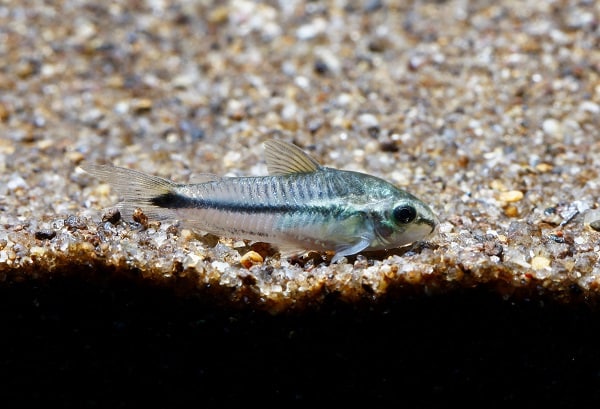
These adorable little fish are some of the smallest fish in the Corydora family. Adults are typically approximately one inch long. These fish are much like the rest of their family as they fall in the bottom dweller category, but it should be noted that the pygmy catfish can occasionally be found in the middle water as well. This is something that aquarists with smaller aquariums will need to keep in mind. If there are already several fish that consume the middle layers of water, a larger aquarium might be needed to make sure there is plenty of room for the pygmy cory catfish as well.
Blue Spotted Corydoras
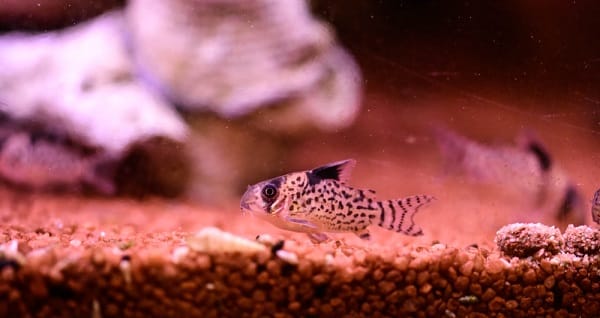
The Blue Spotted corydoras is also named after its uniquely beautiful appearance. It is also known as the black-spotted corydoras, the dotted corydoras or the blacksail corydoras. Often, what name this fish is called depends on the color of its spots. Most of them are spotted a brilliant blue, but there are a few members of the family that have black spots as well.
This tropical fish will maintain the same length as other Corydoras previously mentioned, which is a nice two inches. Like the rest of its family, it prefers to be kept in a school of fish or it can get lonely. It is not uncommon to watch a corydoras become unhealthy if it is kept by itself, so that is an important thing that fish owners need to keep in mind. Aside from that, aquarists will enjoy how low maintenance and peaceful this bottom-dwelling fish will be.
Most members of the corydoras catfish family are named after their appearance. Some of these are more common in the aquarist world, such as the pygmy corydoras or the bronze cory. Others, such as the blue-spotted corydoras, are significantly harder to find in local pet shops. Aquarists often find themselves having to order unique, rare fish online for their aquarium.
Related Video:
